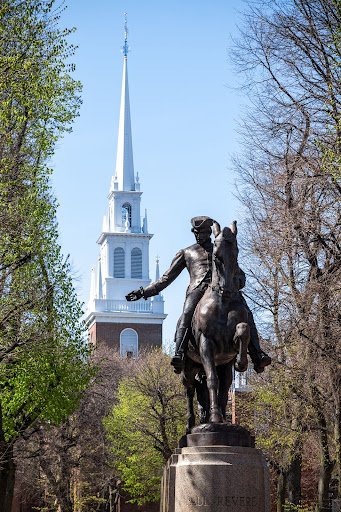History of The North End
North End is one of the oldest neighborhoods in Boston, Massachusetts, USA.
The first Italian immigrants came to the North end from Genoa in the 1860s. The second group was Companions and the last group was Sicilians, Averins, Neapolitans, and Abruzzese. Each group of Italian settlers established settlements in the area of the North End, in order to better adapt to life.
In 1900, the North End Union provided food and assistance to the Italian settlers. At that time, the Italian population of North End was 14,000. Over the next twenty years, it grew to 37,000, and at its peak in 1930, 44,000 Italians were crammed into an area of less than a mile at North End. The neighborhood had become 100% Italian.
In the decades that followed, the city began to develop a negative public sentiment toward Italian immigrants. The north end began to have a notorious reputation for crime. To this day, the North End retains an "old world" feel.
North End retains its original narrow streets and brick buildings, as well as an old-fashioned sense of community. Although Italians now make up less than half of the North End's population, its traditional Italian customs are preserved through the neighborhood's language, music, cuisine, and traditions.
Today, the North End is centered on tourism. However, the old neighborhood grocery stores, fruit stands, butcher stores, bakeries, and shoe stores have disappeared and been replaced by delicious restaurants.
In addition, the Freedom Trail runs through the entire North End as one of Boston's most famous historical sites. So many historic sites of Freedom Trail located in the North End, such as Paul Revere House, Old North Church and Faneuil Hall. These old historic sites have played an extremely important role in the history of Boston and the United States. They bear witness to the struggle for freedom and independence and the birth of America.
Paul Revere’s Statue and Old North Church
Old North Church is a Christian church and the oldest surviving church building in Boston. Its historic site is located at 193 Salem St., adjacent to a statue of Paul Revere. Old North Church's story started on the evening of April. 18th, 1775. According to an account by Paul Revere, he visited John Pulling that night and asked for his help. In order to reliably send the most timely alerts in Boston, they decided to hang lanterns. One lantern represented the British army marching into Boston by land; two lanterns represented the British army crossing the Charles River by boat. Paul, however, did not stay in Boston to wait for the signal of the two lanterns. That night, he left the cabin where he lived in the north end of Boston and rode to Lexington, Massachusetts. The next day, thanks to a signal on Christ Church, the War of Independence officially began. This road trip made him a legend, and his residence is a National Historic Landmark today. (Paul, 1798)
Paul Revere House was built in 1680. In 1770, Paul Revere bought the house and lived in it. However, in the late 18th century, Paul's family did not live here for long. In the first half of the 19th century, the commercial development of the North End was rapid and many immigrants from Europe came to live in Boston. In the early 1900s, it was purchased and restored by John P. Reynolds Jr. and eventually turned into one of the first historic museums in the United States and opened to the public.
As one of Boston's oldest neighborhoods, the North End has witnessed the history from the 1630's colonial era to the Revolutionary War. Although the North End has seen the changes of the times nowadays, its long historical sites and spirit have played a huge role in the culture and history of Boston.
Reference List:
“Letter from Paul Revere to Jeremy Belknap, circa 1798,” Massachusetts Historical Society, https://www.masshist.org/database/viewer.php?item_id=99.
Paul Revere House, 15 Apr. 2022, https://www.paulreverehouse.org/paul-revere-house/.
“North End, Boston.” Wikipedia, Wikimedia Foundation, 22 Mar. 2023, https://en.wikipedia.org/wiki/North_End,_Boston.
“The History of Boston's North End Waterfront.” Battery Wharf Hotel, https://www.batterywharfhotelboston.com/the-history-of-bostons-north-end-waterfront.
